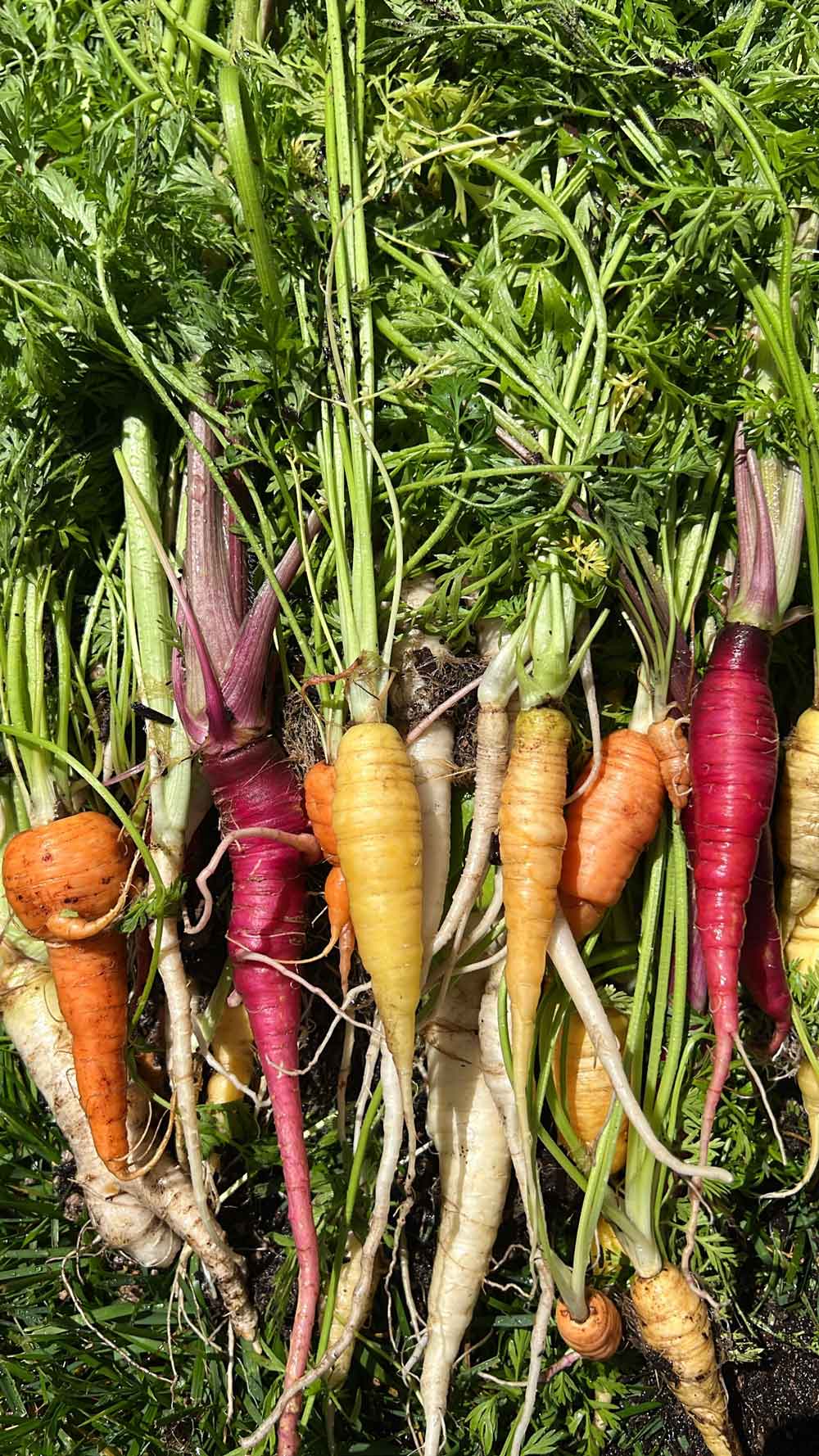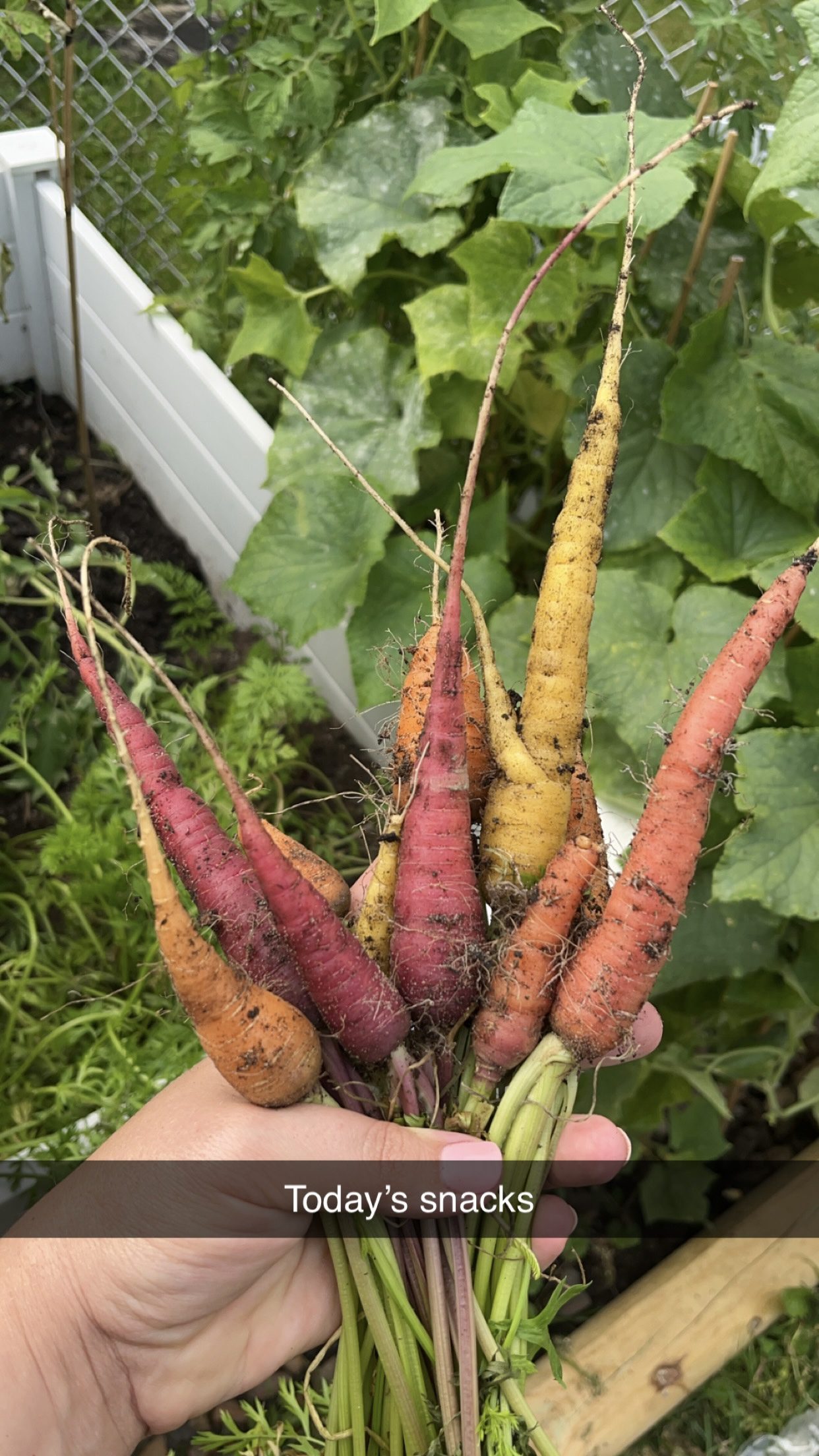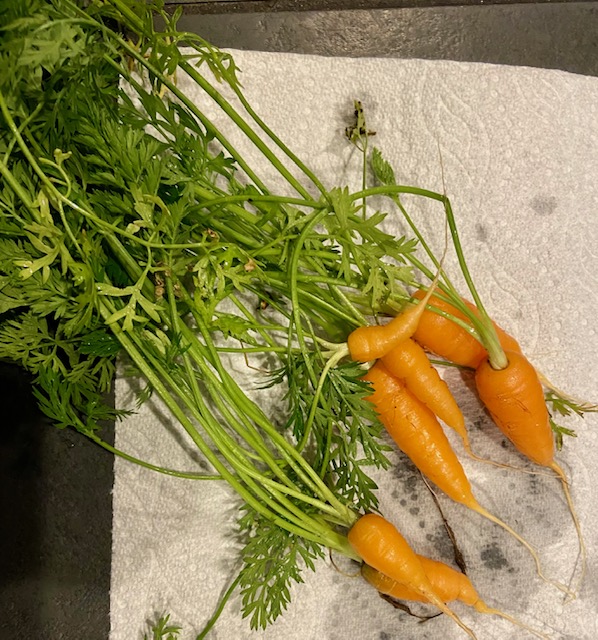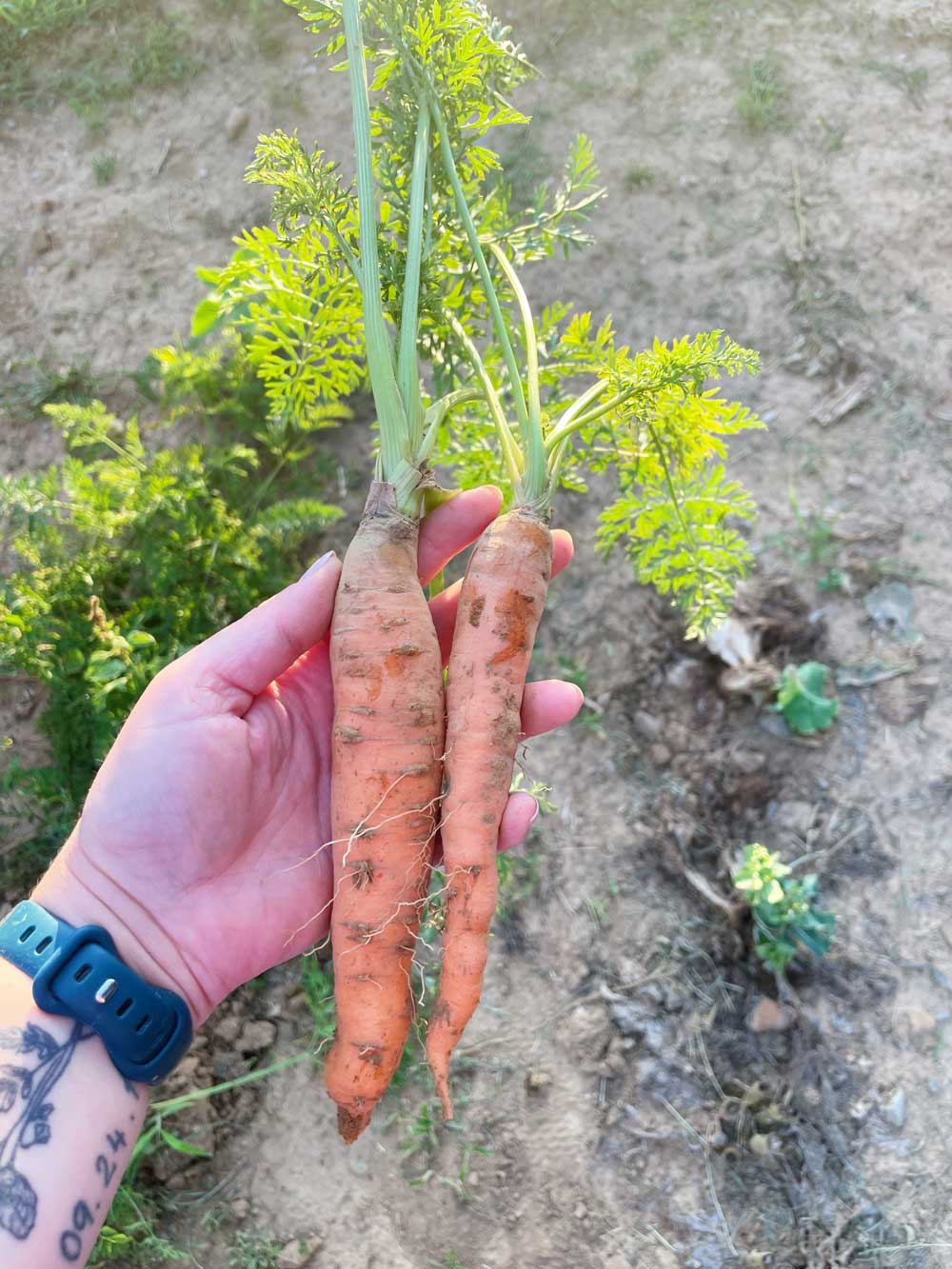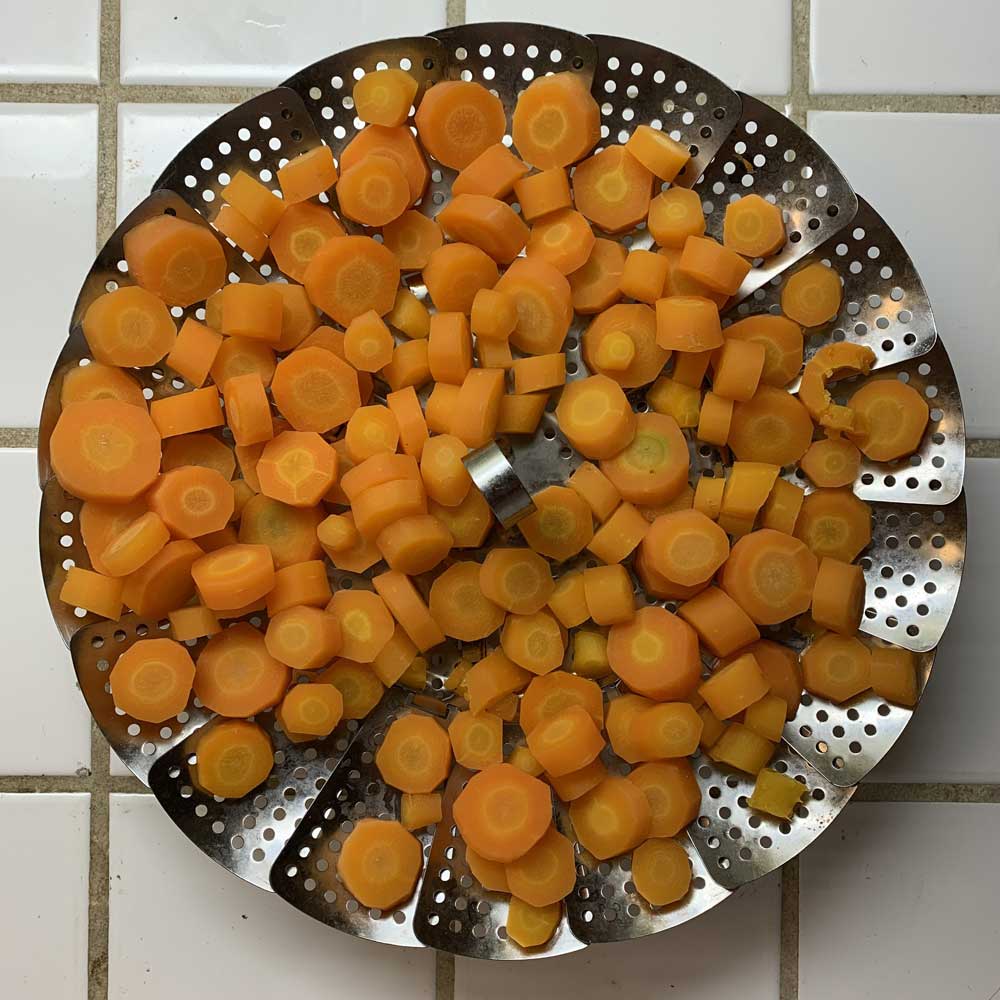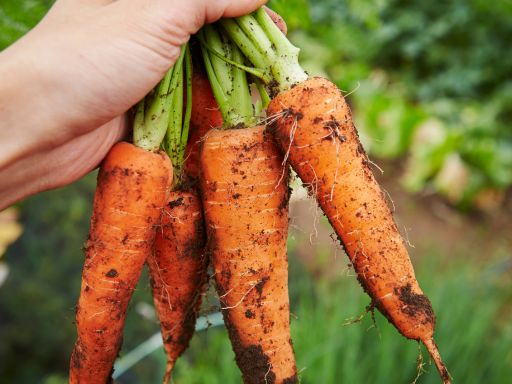About Carrots
Ancient empires located in present-day Iran and Afghanistan began cultivating Bugs Bunny’s favorite vegetable over 5,000 years ago! But did you know that growing orange carrots did not begin until the 17th century in the Netherlands as a tribute to the ruling House of Orange? Strangely, those purple, red, and even black carrots actually preceded the orange varieties that we are so accustomed to today. What about eye health though. Do carrots really improve our eyesight like our parents told us? As a matter of fact, they do, as carrots are a good source of beta carotene, which is an antioxidant that benefits eye health and protects against degenerative eye diseases.
When to Plant Carrot Seeds
Best sown outdoors in spring, carrots should be planted as soon as the soil can be worked in cool weather, even if it’s only a couple of weeks before the last frost of spring. Despite their cold hardiness, nighttime temperatures around 55°F are best for sowing carrot seeds. They don’t tolerate daytime temperatures over 75°F well, so spring or fall are the best planting times.
Carrot seeds can take 10 to 21 days to germinate. Not one of the fastest-growing vegetables, carrots aren’t ready to harvest for 50 to 90 days, depending on the variety being grown. For even sweeter flesh, leave carrots in the ground in fall; they can survive frost, but dig them up before the ground freezes in winter. For summer harvesting, sow carrot seeds outdoors three to five weeks before the last frost in early spring. For fall harvesting, sow seeds in mid to late-summer, starting about 10 weeks before your first fall frost.
If beginning your seeds indoors, fill a flat with potting soil mix. Carrot seeds are very small, so sprinkle the seeds as evenly as possible. You may over sow your seeds, but that is ok—you can use all the seedlings when you transplant them outdoors. Water the seeds for good seed-to-soil contact then sprinkle about ¼ inch of soil on top. Give your flat six hours of sunlight per day and keep temperatures between 55 to 65°F. Once seedlings emerge and grow one to two inches high, you can transplant them outdoors.
Where to Plant Carrot Seeds
Carrots prefer full sun but can tolerate some shade. Seeds will grow best in deep, loose, and well-drained soil. Avoid planting in clay, choosing a location where your soil is loose enough to allow the roots to grow. Compost, sand, and wood ash can add nutrients, drainage, and soluble potassium, respectively. We recommend sowing seeds directly into the garden rather than starting indoors and later transplanting. Root vegetables are most often direct sown in the garden because of their long taproots and difficulties relocating them, but they can be started indoors and transplanted if you choose.
How to Plant Carrot Seeds
The key to growing excellent carrots is preparing your soil ahead of time. This gives the carrot roots the proper growing environment. The trickiest part of growing carrots is dealing with the tiny seeds and thinning them out. Prepare the soil by tilling or hoeing 8 to 12 inches deep and adding compost.
Plant the seeds two inches apart and ⅛ to ¼ inches deep. Use a seed-sower or thin them vigorously to distribute seeds evenly to avoid them growing together. One trick is to mix the carrot seeds with sand to help track where they’ve been planted and keep them spaced out. Cover the top of your soil with a layer of fine compost.
If transplanting seedlings from indoors to outdoors, pick out a clump of soil with several seedlings and carefully pull apart the soil to reveal a seedling with the root intact. Directly sow this seedling into your outdoor garden bed, placing seedlings about two inches apart. Replicate how your seedling was growing in the flat by placing the root down into the soil with the green seedling above soil. It helps to poke a hole with your finger. Then place the seedling inside the hole root down, and fill with soil. Tamp down the soil and lightly water it for good soil contact around the root.
How to Harvest Carrots
Keep the soil moist with frequent shallow waterings. Carrots require at least one inch of water to start, then two inches as roots mature. Gently mulch the area to retain moisture, speed germination, and block the sun from hitting the roots directly. Carrots sometimes take two to three weeks to show any sign of growth. When carrot tops are about four inches tall, they need to be thinned to keep the growing roots about three inches apart. These thinned, underdeveloped carrots are still edible and great in soups.
Follow the Eden Brothers’ seed packet directions for timing; generally, expect to wait 50 to 75 days. Pulling carrots too early will give you bland veggies; they need time to develop their sweetness. Harvesting can be a bit tricky since you cannot see them until you start pulling them out. Test one to see if it is ready once sufficient time has passed. If it is ready, harvest as many as you would like to use and leave the rest for later. When carrots are about as wide as your thumb or ½ inch in diameter, they are ready to harvest! Gently pull from the leafy top, twist, and enjoy! Remove the foliage from the top of the carrot before storing so that it does not draw out the moisture from the roots. If you fail to harvest your carrots and leave them in the ground too long, the tops will flower and produce seeds in the next year.
Carrots do best in sandy, loose soil. If your carrots are too short and ball-like, it means that the soil wasn’t loose enough to push through. Carrots taste better after going through one or more frosts, so don’t worry if it freezes when they are in the ground!

